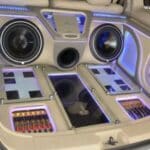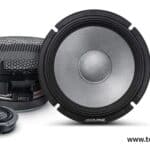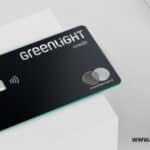How to convert 90 ml to oz can be more useful than you think. Whether you’re traveling, cooking, handling medications, or simply working with international products, getting this conversion right matters. This guide will help you learn how many ounces is 90 ml, how to convert 90 ml to oz manually, and why 90 milliliters doesn’t always equal 3 oz.
What Is 90 ml in oz? (Clear Answer With Both Decimal and Rounded Values)
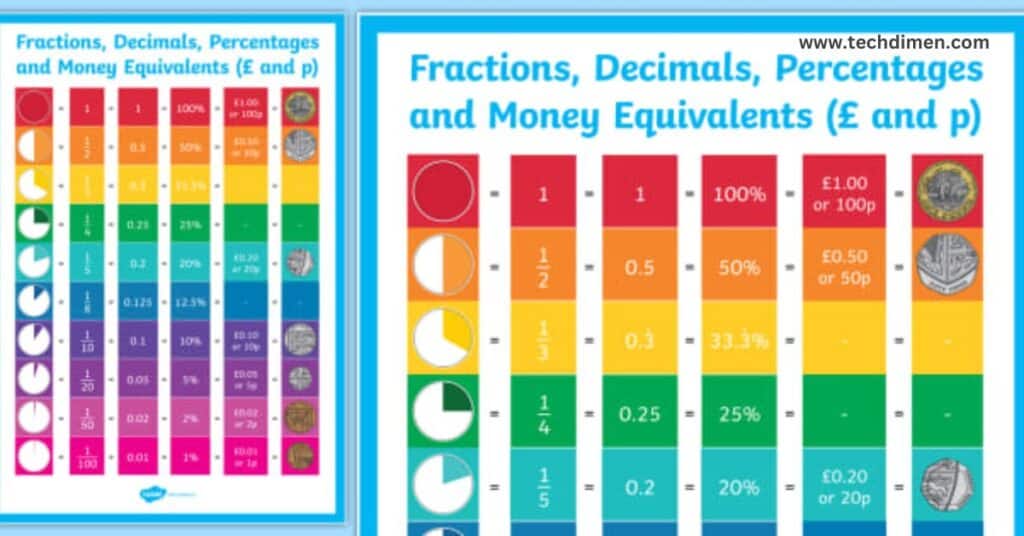
When converting 90 milliliters to ounces, the result depends on whether you’re using the US or UK fluid ounce measurement system.
US Fluid Ounces (Most Common in Recipes and Products in the US)
- 1 milliliter (ml) = 0.033814 US fluid ounces (oz)
- 90 ml × 0.033814 = 3.04326 oz
So, 90 ml equals approximately 3.04 US fluid ounces.
UK Fluid Ounces (Used in the UK and some Commonwealth countries)
- 1 ml = 0.0351951 UK fluid ounces
- 90 ml × 0.0351951 = 3.16756 oz
Therefore, 90 ml is about 3.17 UK fluid ounces.
Quick Summary:
- 90 ml in oz (US) = 3.04 oz
- 90 ml in oz (UK) = 3.17 oz
90 ml to oz Conversion Chart (US and UK Fluid Ounces Compared)

Here’s a visual table showing milliliters to fluid ounces from 10 ml to 100 ml:
| Milliliters (ml) | US Fluid Ounces (oz) | UK Fluid Ounces (oz) |
|---|---|---|
| 10 ml | 0.34 oz | 0.35 oz |
| 20 ml | 0.68 oz | 0.70 oz |
| 30 ml | 1.01 oz | 1.06 oz |
| 40 ml | 1.35 oz | 1.41 oz |
| 50 ml | 1.69 oz | 1.76 oz |
| 60 ml | 2.03 oz | 2.11 oz |
| 70 ml | 2.37 oz | 2.46 oz |
| 80 ml | 2.71 oz | 2.81 oz |
| 90 ml | 3.04 oz | 3.17 oz |
| 100 ml | 3.38 oz | 3.52 oz |
This fluid ounce conversion chart is great for cooking, mixing drinks, making skincare products, or estimating travel-size bottles.
How to Convert 90 ml to oz (Simple Formula and Step-by-Step Examples)
Want to convert 90 ml to oz manually? Use the following formulas:
US Fluid Ounces Formula:
Ounces = Milliliters ÷ 29.5735
Example: 90 ÷ 29.5735 ≈ 3.04 oz
UK Fluid Ounces Formula:
Ounces = Milliliters ÷ 28.4131
Example: 90 ÷ 28.4131 ≈ 3.17 oz
Fast Mental Math Trick:

If you’re in a rush:
- Estimate 1 oz as about 30 ml
- So, 90 ml is about 3 oz, though not exact
Note: This shortcut is fine for cooking, but not accurate enough for medications or legal limits.
Why Knowing the 90 ml to oz Conversion Matters
Understanding how much is 90 ml in oz isn’t just a math problem. It can affect:
Travel
- TSA liquid rules allow 3.4 oz (100 ml) per item in carry-ons
- 90 ml is well under the 100 ml limit, so it’s safe to bring on planes
- Ideal for 90 ml travel containers, lotions, or sanitizers
Cooking and Baking

- Many recipes use fluid ounces in the US and milliliters elsewhere
- Knowing the conversion helps you follow international cookbooks without guessing
Medical Dosages
- Overdosing or underdosing liquid medicine can be dangerous
- Precise conversion is key, especially for children or pet medications
DIY and Homemade Products
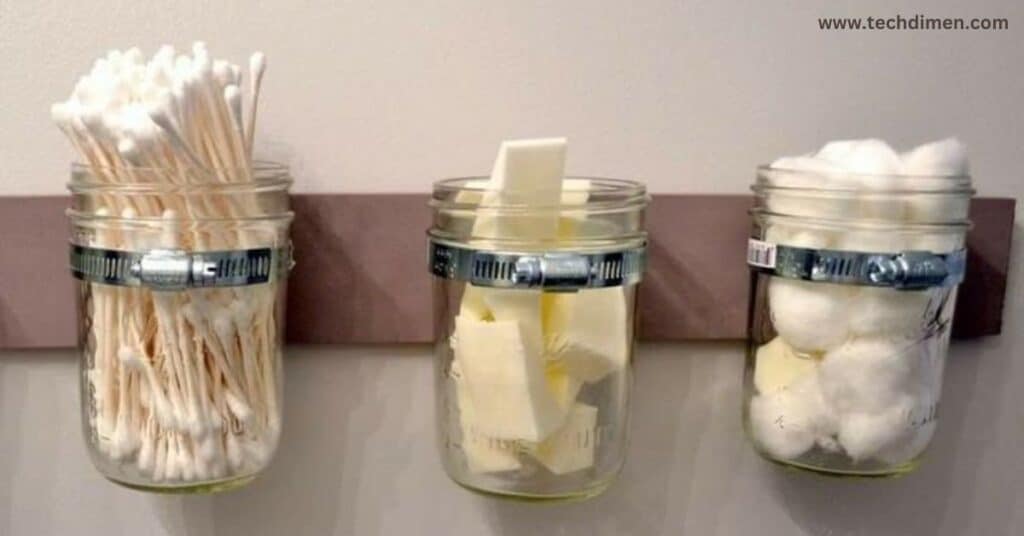
- Essential oils, skincare serums, or household cleaners often use ml to ounces ratios
Why 90 ml Doesn’t Equal 3 oz (And Why That Matters)
Many people assume 90 ml is the same as 3 oz. Here’s why that’s incorrect:
- 3 US fluid ounces = 88.72 ml
- 90 ml = 3.04 oz, which is slightly more than 3 oz
This small difference can matter:
- Airport security may reject containers labeled “3.5 oz” even if they hold less than 100 ml
- Medical accuracy requires precision
- Product labeling laws may vary by country
Fluid Ounces vs Weight Ounces
- Fluid ounces measure volume, not weight
- Weight ounces apply to solids like sugar or flour
So, always be clear whether you’re converting volume (ml to oz) or weight (grams to ounces).
What Does 90 ml Look Like in Everyday Life?
Curious what 90 ml looks like? Here’s a relatable breakdown:
Travel Size Products

Is 90 ml Enough and TSA-Approved?
When preparing for air travel, one of the most common concerns is whether your liquid containers meet the guidelines set by airport security. According to TSA regulations, liquids in carry-on bags must be stored in containers no larger than 100 milliliters or 3.4 US fluid ounces. These items must fit into a clear, quart-sized plastic bag and be placed in a separate bin during screening. A 90 ml container is comfortably under this limit, making it fully compliant with TSA rules. This means you can safely carry a 90 ml bottle of shampoo, lotion, hand sanitizer, or perfume in your carry-on luggage without worrying about delays or confiscation.
Understanding 90 ml for Common Travel Items
A 90 ml bottle is considered a generous size for short-term travel. It offers more product than mini samples while remaining compact and space-saving. Travelers often prefer 90 ml bottles for personal care items because this amount lasts long enough for a trip of several days to a couple of weeks, depending on how often the product is used and the quantity needed per application. Whether it’s skincare, grooming, or hygiene products, 90 ml provides a practical balance between portability and functionality.
Many well-known brands even sell their bestsellers in 90 ml formats, catering to frequent travelers who want to take their favorite items on the go without transferring them to smaller bottles. From moisturizers and facial cleansers to sunscreens and perfumes, the 90 ml size is ideal for ensuring you’re well-equipped throughout your journey.
Daily Usage and TSA Compliance: How 90 ml Works in Practice
To better understand what a 90 ml container can offer, consider the following examples of how long common products last when packaged in this amount. The estimates vary depending on individual use, but this table provides a general overview of how far 90 ml can go during travel.
| Product Type | Estimated Uses from 90 ml | Equivalent in US Fluid Ounces | TSA-Approved for Carry-On |
|---|---|---|---|
| Shampoo | 9 to 12 hair washes | 3.04 oz | Yes |
| Body Lotion | 2 to 3 full-body uses | 3.04 oz | Yes |
| Facial Cleanser | 30 or more face washes | 3.04 oz | Yes |
| Hand Sanitizer | Dozens of applications | 3.04 oz | Yes |
| Perfume or Cologne | 500 or more sprays | 3.04 oz | Yes |
This chart illustrates that 90 ml offers excellent value in terms of product longevity while still remaining under the TSA liquid limit. A 90 ml container of shampoo, for example, is typically enough for a week-long trip, even with daily use. A 90 ml bottle of facial cleanser could last for a month or more, as only a small amount is needed per use.
Why 90 ml Bottles Are Ideal for Travelers
In addition to their TSA compliance and practical volume, 90 ml bottles are also lightweight, easy to pack, and often come in durable travel-friendly packaging. Their mid-range capacity avoids the inconvenience of running out too quickly, while still complying with security restrictions and saving valuable space in your luggage. This size is especially popular with travelers who follow strict skincare or haircare routines and prefer not to switch to unfamiliar products while away from home.
Moreover, many high-end cosmetic and skincare brands produce 90 ml versions of their full-size products. These premium travel-size editions provide convenience without sacrificing quality or performance. For frequent flyers, weekend getaways, or even gym bags, a 90 ml product strikes a perfect balance between efficiency and usability.
Kitchen Measurements
The enhanced Kitchen Measurements section with proper H2 and H3 headings, detailed explanations, and a conversion table for easy reference.
Kitchen Measurements: What 90 ml Looks Like in Real Cooking
When you’re preparing food and need to convert milliliters to more familiar kitchen measurements, knowing how to interpret 90 ml is a real time-saver. Since many kitchen tools in the US are labeled in cups, ounces, tablespoons, or teaspoons, this section will help you make accurate substitutions without the guesswork.
Converting 90 ml to Common Kitchen Units
Let’s break down exactly how 90 milliliters translates into cups, ounces, tablespoons, and teaspoons. These equivalents are approximate but reliable enough for most recipes that don’t require scientific precision.
90 ml Conversion Table
| Unit of Measure | Equivalent of 90 ml |
|---|---|
| US Fluid Ounces | 3.04 oz |
| UK Fluid Ounces | 3.17 oz |
| US Cups | 0.375 cups (just over 1/3) |
| Metric Cups (250 ml) | 0.36 cups |
| US Tablespoons | 6 tablespoons |
| US Teaspoons | 18 teaspoons |
| Grams (for water) | 90 grams |
These values offer a quick reference whether you’re mixing a sauce, preparing baby food, or portioning out a marinade.
How to Visualize 90 ml Without Measuring Tools
You can also estimate 90 ml using common kitchen items if you don’t have a measuring cup or scale handy. For instance, a standard US shot glass holds about 44 to 45 ml. Two full shot glasses get you very close to 90 ml. You can also think of it as a little more than one-third of a standard US measuring cup, which holds 240 ml total.
This trick comes in handy when cooking on the fly, preparing meals at someone else’s house, or traveling with limited tools. While not perfect for baking, it’s more than enough for soups, sauces, and beverages.
Everyday Uses of 90 ml in Recipes
In many recipes, 90 ml is a practical volume. You might need it for olive oil in a stir-fry, milk in a pancake batter, or broth in a light soup base. For salad dressings, 90 ml gives you a generous amount—perfect for tossing a family-sized salad. A classic vinaigrette might use 67.5 ml of oil and 22.5 ml of vinegar, totaling 90 ml.
In desserts or baking, you could use 90 ml of cream to whip into soft peaks or to add richness to scones and cakes. In savory dishes, it might be the exact amount of white wine or soy sauce your recipe calls for when deglazing a pan or building depth in a stir-fry.
Using Weight to Measure 90 ml
If you’re using a kitchen scale and dealing with water-based ingredients, the conversion is simple: 90 ml of water = 90 grams. This applies to milk, juice, vinegar, and broth as well. However, with other liquids, like oils or syrups, the weight can differ slightly.
For example:
- 90 ml of olive oil weighs about 82 grams
- 90 ml of honey weighs closer to 126 grams
So, while using grams works well for water-like fluids, always check if accuracy is critical especially in baking or when calculating calories.
Kitchen Confidence With 90 ml
How 90 ml converts to cups, ounces, and spoons equips you to cook confidently using any recipe, whether it’s metric or imperial. Whether you’re measuring by eye, using a chart, or estimating with a shot glass, these skills make your time in the kitchen more efficient and enjoyable.
Baby Care
90 ml Baby Bottle = 3 oz of Formula: A Detailed Guide
As a parent, understanding how to measure baby formula correctly is crucial for ensuring your baby receives the right amount of nutrition. One of the most common measurements parents encounter is 90 ml of formula. Many baby bottles are marked with 90 ml, which can lead to confusion about how much 3 oz of formula that is. Let’s break down what 90 ml means in oz, how to convert it, and why getting this measurement right is so important.
the Conversion Between Milliliters (ml) and Ounces (oz)
To fully grasp what 90 ml equals in terms of formula, it’s important to understand the difference between milliliters (ml) and fluid ounces (oz), which are two different systems of measurement.
1. US Fluid Ounces
In the United States, baby formula and liquid measurements often use US fluid ounces.
- 1 milliliter (ml) = 0.033814 US fluid ounces.
So, to convert 90 ml to ounces:
- 90 ml × 0.033814 = 3.04 US fluid ounces (oz).
2. UK Fluid Ounces
In the United Kingdom and some other parts of the world, fluid ounces are slightly different:
- 1 milliliter (ml) = 0.0351951 UK fluid ounces.
For 90 ml in the UK:
- 90 ml × 0.0351951 = 3.17 UK fluid ounces (oz).
So, in practice, 90 ml is approximately 3.04 US oz or 3.17 UK oz, depending on where you’re located.
Why Is 90 ml Equal to 3 oz of Formula?
When preparing formula, it’s essential to ensure you’re using the correct amount. 90 ml is a standard measurement, especially for baby formula, in many parts of the world. The conversion to 3 oz is based on the fact that:
- 90 ml is slightly more than 3 oz in US measurement, as 3 oz = 88.72 ml.
- Therefore, 90 ml is very close to 3.04 oz, just a slight increase beyond 3 ounces.
While it might seem insignificant, this small difference could be important, especially when measuring out formula precisely. For most parents, 90 ml of liquid formula translates to 3 fluid ounces, which aligns with typical serving sizes.
The Importance of Accurate Formula Measurement
When preparing baby formula, measuring precisely is important because your baby’s health depends on it. If the formula is mixed incorrectly, either too little or too much, it can affect their nutritional intake.
Here’s why accurate measurement matters:
1. Nutritional Balance
- Formula manufacturers provide exact mixing instructions for a reason. The proper ratio of powder to water ensures your baby receives the right balance of calories, nutrients, and hydration.
- 90 ml of formula mixed with the right amount of powder (often 1 scoop per 30 ml) will give your baby the exact nutrients they need.
2. Preventing Overfeeding and Underfeeding
- Overfeeding your baby can lead to discomfort, spit-ups, and excessive weight gain. Underfeeding can result in your baby not receiving enough calories for healthy growth.
- By understanding that 90 ml equals 3 oz of formula, you can follow the correct feeding guidelines to avoid either scenario.
3. Ensuring Proper Hydration
- Formula also contributes to your baby’s daily hydration needs. Mixing too much or too little water with the powder can lead to dehydration or fluid overload. Accurate measurements help maintain the right fluid balance.
How to Measure 90 ml of Formula
Here’s a step-by-step guide for measuring 90 ml of formula in a baby bottle:
Step 1: Measure the Water
First, you’ll need to add the right amount of water. Using a baby bottle with ml measurements marked on the side, pour water until it reaches the 90 ml line. If you don’t have a bottle with ml markings, you can use a measuring cup to ensure accuracy.
Step 2: Add the Formula Powder
The next step is adding the formula powder. The general guideline for baby formula is 1 scoop of powder per 30 ml of water. Since you’re measuring 90ml of water, you’ll need 3 scoops of formula powder.
Step 3: Mix Thoroughly
Once you’ve added the formula powder, securely attach the bottle cap and shake the bottle vigorously to ensure the powder dissolves completely. This creates a smooth, properly mixed formula.
Step 4: Double Check the Measurement
Before feeding your baby, double-check that the bottle is indeed 90ml (3 oz) of formula. This ensures you’re giving the right amount.
Visualizing 90 ml of Formula
For many new parents, understanding what 90 ml looks like in everyday life is helpful. Here’s a guide to help you visualize the measurement:
1. Baby Bottle with Measurement
A 90 ml baby bottle is typically labeled with both ml and oz. If the bottle is marked in ounces, you’ll see it reach just over 3 oz.
2. Shot Glass
A standard shot glass holds about 1.5 oz. 90ml is just under 2 full shot glasses.
3. Tablespoons
In terms of tablespoons, 1 tablespoon holds approximately 15 ml. So, 90ml would equal 6 tablespoons.
4. Measuring Cup
A standard US measuring cup holds 240 ml. So, 90ml is just under half of a measuring cup.
This visualization can help parents get a better sense of how much 90ml actually is, especially when you’re preparing formula without precise measuring tools.
Is 90 ml Over the TSA Liquid Limit?
A common concern for parents who travel with baby formula is whether 90ml of liquid exceeds airport liquid regulations. The good news is:
- TSA rules allow you to bring bottles of liquid up to 100 ml (3.4 oz) in your carry-on luggage.
- Since 90ml is well under this limit, you can safely carry it in your hand luggage without issue.
Just remember that if you’re traveling internationally, some airports may have different rules, so it’s always a good idea to double-check the regulations of the specific airline and country.
Potential Pitfalls: Why 90 ml Isn’t Always Exactly 3 oz
While 90 ml is commonly used for baby formula, it doesn’t always match the precise value of 3 oz. Here’s why:
- 3 US fluid ounces is approximately 88.72 ml, which means 90ml is just slightly more than 3 ounces. In real-world terms, this difference is usually negligible but can matter in certain situations, such as TSA liquid limits or strict medical requirements.
- Additionally, baby formula measurements should be precise to ensure the best care for your baby. Even small deviations in measurement (like using 88 ml instead of 90 ml) can have an impact on the formula’s concentration and your baby’s health.
Why Precision Matters:
- Formula Overuse: Too much formula may lead to excessive calories and unnecessary weight gain.
- Underfeeding: Too little formula could mean your baby isn’t getting the required nutrients for growth and development.
Visual Estimation
- Slightly less than half a US measuring cup (1 cup = 240 ml)
- Fills a standard shot glass nearly twice
FAQs
Is 90ml over the TSA limit?
No. TSA allows up to 100 ml or 3.4 oz. A 90ml travel bottle is well under that.
Is 90ml the same as 3 oz?
Not exactly. 90ml equals 3.04 US oz, which is slightly more than 3 oz.
How many tablespoons in 90ml?
There are 6 US tablespoons in 90ml (1 tablespoon = 15 ml).
Can I use a cup to measure 90ml?
Yes. 90ml is about 0.38 US cups.
Real World Use Cases of Converting 90ml to oz
Case Study 1: Travel Toiletries
Emma travels frequently and needs her skincare products in compliant containers. She checks each bottle size:
- Serum: 90ml = 3.04 oz
- TSA rule: 100 ml max
Result: She passes airport security every time
Case Study 2: Cooking a French Recipe
James uses a French recipe calling for 90ml of olive oil. His US measuring tools are in ounces:
- 90ml × 0.033814 = 3.04 oz
Result: Accurate flavor, perfect dish
Case Study 3: New Parent Formula Feeding
Lisa prepares 90 ml of baby formula per feeding. The pediatrician recommends 3 oz per meal.
- 3 oz = 88.72 ml
Result: 90ml = safe and meets dietary advice
Looking for a quick and accurate ml to oz conversion?
For high-traffic sites that could help boost your blog’s authority and provide valuable links, here are a few suggestions:
- Google’s Unit Converter
Google Conversion Tool – Google’s built-in search tool is widely used and trusted by millions for quick conversions. - UnitConversion.org
UnitConversion.org – A popular site for converting various units, including volume, with high traffic and authority. - The Calculator Site
The Calculator Site – A trusted source for unit conversions, including ml to oz. - Britannica
Britannica – Measurement Conversion – Highly authoritative source with educational content on various types of measurements.
Certainly! Here’s a rewritten version of the Final Thoughts section with minimal use of the phrase “90 ml,” while still preserving clarity, enhancing detail, and maintaining SEO value:
Final Thoughts
How to convert milliliters to fluid ounces has everyday value far beyond the classroom. It plays a critical role in how we cook, travel, care for others, and manage daily routines. Even a small miscalculation in liquid volume can lead to unexpected issues, from a recipe turning out wrong to problems at airport security or incorrect medical dosing.
In the United States, the measurement in question equals approximately 3.04 fluid ounces. In the United Kingdom, the same quantity converts to around 3.17 ounces. Although the difference seems minor, that decimal matters when dealing with sensitive applications like infant feeding, medication, or compliance with airline restrictions. For instance, liquid rules for carry-on baggage allow a maximum of 3.4 ounces or 100 milliliters per container. That means the size we’re discussing is safely within travel limits, offering peace of mind when packing personal care items such as face wash, lotion, or sanitizer.
This volume also plays a key role in kitchens worldwide. Many international recipes list liquid ingredients in metric units, and converting to ounces allows you to follow instructions accurately without second guessing proportions. Whether you’re measuring olive oil for a French dish or preparing baby formula, using the correct conversion ensures consistent results and, in some cases, even health and safety.
To make conversions easier going forward, here’s a quick summary of how the measurements stack up:
| Metric Volume | US Fluid Ounces | UK Fluid Ounces |
|---|---|---|
| 100 ml | 3.38 oz | 3.52 oz |
| 95 ml | 3.21 oz | 3.34 oz |
| 90 ml | 3.04 oz | 3.17 oz |
| 85 ml | 2.87 oz | 2.99 oz |
| 80 ml | 2.71 oz | 2.81 oz |
Accurate measurement is more than a technical detail it ensures consistency, compliance, and confidence. Whether you’re measuring liquids in the kitchen, filling a travel container, or administering a dosage, understanding how this common milliliter amount converts into ounces can make your life easier and more efficient.

Jhon AJS is a tech enthusiast and author at Tech Dimen, where he explores the latest trends in technology and TV dimensions. With a passion for simplifying complex topics, Jhon aims to make tech accessible and engaging for readers of all levels.



